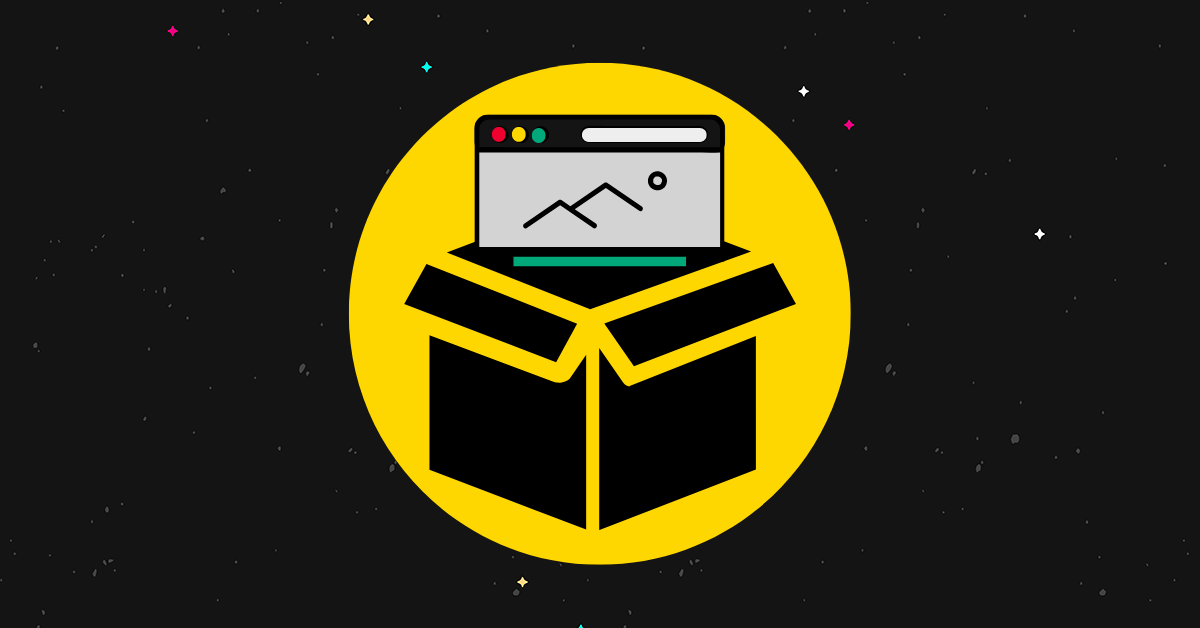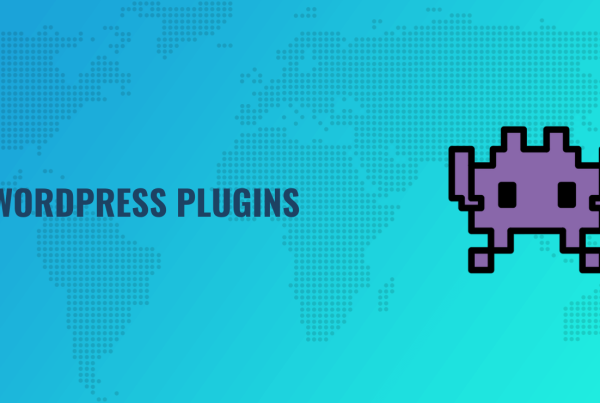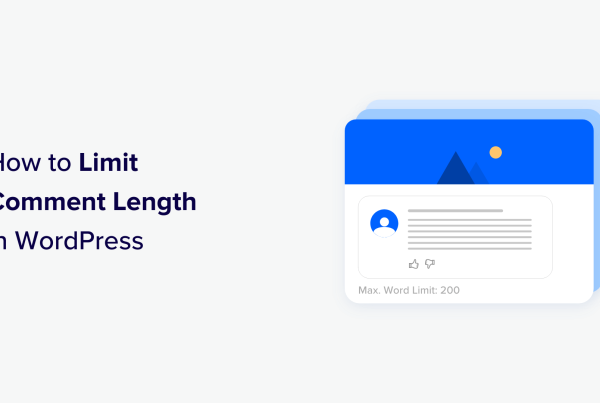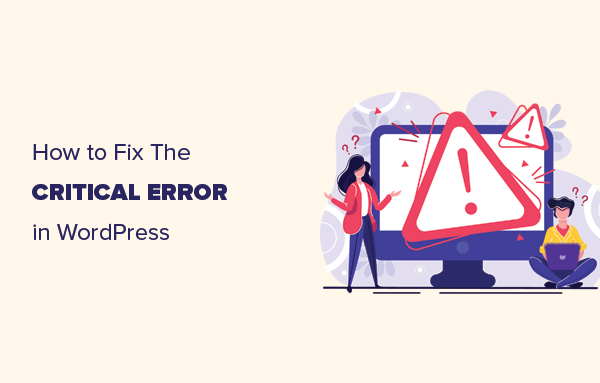Looking for an easy, low-cost way to start an ecommerce business? These are the best dropshipping websites for the job!
Dropshipping is a type of ecommerce business model in which you sell products to consumers, and a third-party company fulfills the order for you.
What’s cool about this is that you don’t have to purchase any stock from suppliers upfront. Instead, you pay for the product on-demand after your customer makes a purchase.
It works like this: the customer pays you, then you pay your dropshipping supplier, and they ship it straight to your customer’s door. Easy!
The only hard part is finding a good dropship supplier and setting up your online store.
That’s why in this post, we’re going to be looking at the best dropshipping suppliers available that can help you to do just that.
These sites help you to find products from suppliers that offer dropshipping fulfillment and sell them through your own ecommerce website. And we’ll tell you everything you need to know about each of them.
Ready? Let’s get started.
The best dropshipping websites – summary
TL;DR:
- Spocket – Best dropshipping website for most users. Supports a huge range of products and integrates with top ecommerce platforms such as Shopify, AliExpress, BigCommerce, WooCommerce, Alibaba, and more.
- Printful – The best website for print-on-demand dropshipping. Get custom branded products to sell online. They have printing facilities all over the world and support a wide range of products. Integrates with Shopify, WooCommerce, Etsy, Amazon, eBay, and more.
- Shopify – Best ecommerce store builder. Easily build your online store and integrate with a large range of dropshipping platforms.
#1 – Spocket
Spocket is our top pick for the overall best dropshipping website. It integrates with all the leading ecommerce platforms, automates the order fulfillment process, and makes it easy to find thousands of awesome products from dropshipping suppliers all over the world (especially in the EU/US).
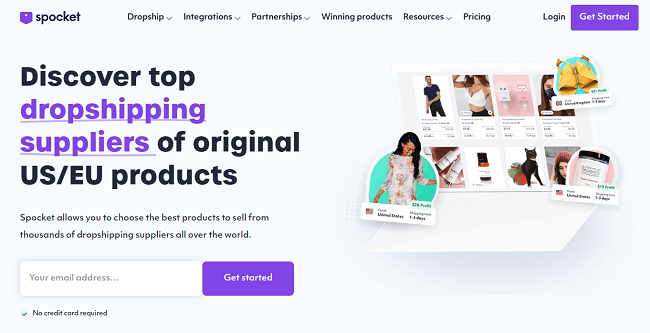
The best thing about Spocket is its product catalog. 80% of its dropshipping suppliers are based in Europe or the US, which is good news if you’re targeting customers in these regions. And there are exclusive heavy discounts of 30-40% on all products.
The quality of the products available is the best we’ve seen anywhere—and there are thousands of options to choose from.
Once you sign up, you can browse the extensive Spocket product catalog from your dashboard. You start by choosing a category based on what you want to sell, like Accessories, Men’s Clothing, Women’s Clothing, Bath & Beauty, Toys, Pets, Gifts, etc.
If you’re not sure what you want to sell yet, the ‘Trending’ category is a great place to find inspiration — it shows you all the best-selling products that are hot right now.
Alongside each product in Spocket’s catalog, you’ll see the listing cost (the price you buy for), the retail price (the price you could potentially sell for), shipping times, and shipping location.
You can utilize rich filtering options to narrow down your search based on any of the above. For example, if you’re selling to a US market, you can filter the results to only show products shipped from the US for faster delivery.
Once you’ve found a product you want to sell, you can add it to your Spocket import list in one click, and from there, push it to your store. And if you want to test it out before you start selling, you can also order samples in a couple of clicks.
If you can’t find a product you want to sell in Spocket’s catalog, you can also import products from AliExpress to Spocket using the AliScraper Chrome extension.
Spocket offers native integrations with all the major eCommerce platforms including Shopify, BigCommerce, Wix, WooCommerce, Ecwid, and Squarespace.
Once you’ve connected it, orders purchased from your store will be sent directly to your suppliers, who will ship the product to your customer alongside a custom-branded invoice. You’ll keep the difference between the retail price and the supplier price as profit.
Key features
- Tons of EU/US suppliers
- Best-in-class product quality
- Thousands of products to choose from
- Branded invoices
- Weekly bestseller lists
- Integration with all the main ecommerce platforms
- AliScraper (for AliExpress imports)
- 30-40% product discounts
Pros and cons
| Pros | Cons |
| Fantastic product catalog | Some advanced features only available on higher-priced plans (e.g. Branded Invoicing and Image Search) |
| Easy integrations | |
| Nice UI |
Pricing
You can get started with Spocket’s Free plan, and upgrade to unlock more unique products and advanced features. Paid plans start at $29.99/month. There’s also a 14-day free trial available on all plans.
#2 – Printful
Printful is our favorite print-on-demand dropshipping website. You can connect it to your website to sell custom-designed, branded merchandise all over the world, with fully-automated on-demand fulfillment.
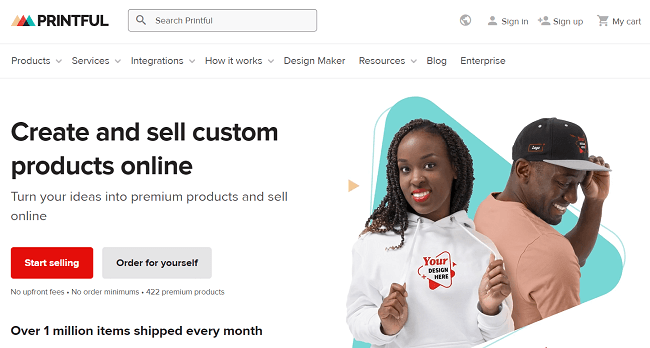
In case you didn’t already know, print-on-demand is a specific type of dropshipping in which you sell products featuring your own designs and artwork, and the supplier prints the product on-demand for you when a customer makes a purchase.
This makes it a great choice for artists, designers, and anyone that wants to sell their own custom branded merch.
There are lots of print-on-demand fulfillment companies out there, but Printful is our favorite. It has dozens of printing facilities spread all over the world and offers excellent product quality, good prices, and rapid delivery. And it integrates with all your favorite ecommerce platforms: Shopify, WooCommerce, Etsy, Amazon, eBay, etc.
It’s super easy to get started. Just sign up for Printful and upload your designs (or create them using the built-in Design Maker) to any product in the Printful catalog.
There are hundreds of products you can add your designs to, including men’s and women’s clothing, water bottles, mugs, wall art, stationery, and more.
Then, you can import your custom-designed products to your store and start selling. As orders come in, they’re sent through to Printful who will print, package, and ship them to the customer from the nearest printing fulfillment facility. You can add things like branded stickers and cards to the product packaging, and even your own logo to t-shirt labels.
There are facilities all over the world, so most orders benefit from local fulfillment and faster delivery times. And faster delivery times lead to happier customers.
After your customer places an order, you’ll pay Printful for the base cost of the product, plus their markup for fulfillment. You set your own retail prices so you’ll have full control over your profit margins.
Key features
- Print-on-demand fulfillment
- Smooth automation
- Built-in design tools
- Local fulfillment
- Fast shipping
- White-label branding
- No order minimums
Pros and cons
| Pros | Cons |
| Superb quality | Limited range of product categories |
| Global network of in-house and partner printing facilities | Lower margins than some dropshipping websites |
| Extensive integrations |
Pricing
It’s free to sign up for Printful. There are no monthly fees but Printful will take their cut out of your product sales. If you want to unlock premium features, you can upgrade to a paid plan starting from $9/month.
#3 – Shopify
Shopify is our favorite ecommerce platform. It doesn’t offer dropshipping out of the box, but you can use it to build your online storefront and easily integrate it with a third-party dropshipping platform.
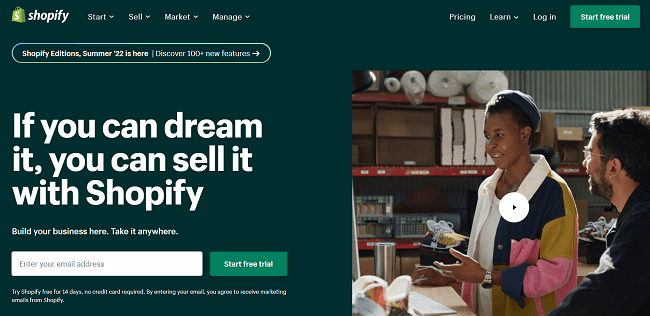
Shopify is different from the other dropshipping websites on this list. So far, we’ve only looked at websites that connect you with dropshipping suppliers and help you find products to sell.
But here’s the thing: You can’t use those services and start a dropshipping business if you don’t already have your own website to sell products through. And that’s where Shopify comes in.
As the most popular ecommerce platform in the world, there’s no better choice when it comes to building and hosting your online storefront. It’s used by millions of businesses across the world, from SMBs and entrepreneurs to huge enterprises.
With Shopify, you can build your ecommerce store in no time. Just sign up and use the intuitive Store Builder to bring your vision to life. There’s no coding required—simply choose a theme, edit it in the WYSIWYG drag-and-drop editor, add your products, and you’re ready to start selling.
The only problem is that Shopify doesn’t offer dropshipping directly, so you’ll need to integrate it with a third-party dropshipping platform. Fortunately, that’s easy too.
Pretty much every dropshipping provider (including Spocket, Printful, and all the other sites on this list) will integrate with Shopify. And you can also find dropshipping plugins in the Shopify App Store.
Key features
- Website builder
- Drag-and-drop editor
- Checkout
- Custom domain
- Inventory and product management
- Marketing tools (email, Facebook ads, etc.)
- Hosting
- App Store
Pros and cons
| Pros | Cons |
| Easy to use | No native dropshipping functionality (requires third-party integration) |
| Fully-hosted, all-in-one ecommerce builder | Transaction fees on sales if you use a payment provider other than Shopify Payments |
| Excellent support | |
| Flexible and extensible |
Pricing
Plans start at $29/month (~50% discount available if you sign up yearly). There are also credit card fees that vary depending on your plan, and additional transaction fees when you use a third-party payment provider instead of Shopify Payments.
A 14-day free trial is available.
#4 – SaleHoo
SaleHoo is a wholesale supplier directory that integrates with Shopify and makes it easy to find and add hot products to your store. It stands out for its focus on quality and above-average profit margins.

What’s great about SaleHoo is that, unlike many other dropshipping websites, it screens and vets all its suppliers and products. So you only get access to the most dependable suppliers—and the highest margins.
SaleHoo’s research team of seasoned dropshipping experts use their decades of knowledge to carefully hand-pick thousands of trending products from AliExpress.
Thanks to this process, SaleHoo is one of the only catalogs where every product has a high profit margin of at least 3x higher than the cost.
And if you want to push those margins even higher, you can use the built-in price range slider to sort through the catalog and find the lowest-cost products. You can also search by niche and utilize other filters to narrow down your results.
To add products to your store, you’ll first need to click the Connect Store button on your dashboard to sync it up with Shopify. Then, you can import products you find in one click.
But our favorite feature of all about SaleHoo is the built-in Pricing Control tool. It’s a really neat feature that lets you automatically add a set profit margin to your product prices. So when a supplier changes their prices, your retail price will automatically be adjusted so you still get the margin you want every time.
Key features
- Automatic pricing control
- Hand-picked product catalog
- Easy Shopify integration
- Vetted suppliers
- Members forum
- Search filters
Pros and cons
| Pros | Cons |
| Higher margins than most | Only integrates with Shopify |
| Dependable suppliers | Suppliers/products all only come from AliExpress |
| Advanced pricing control feature | No free plan / free trial |
Pricing
Plans start at $27/month or $270/year for SaleHoo Dropship. Alternatively, you can get annual access to the SaleHoo Supplier Directory for $67/year.
#5 – DropshipMe
DropshipMe is a dropshipping website that makes it easy to import hand-picked best-selling dropshipping products with polished titles and descriptions to your WordPress store and start selling.
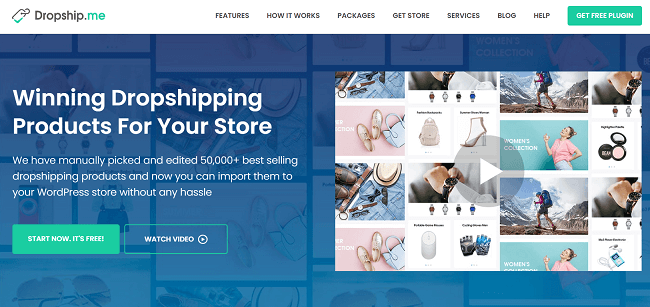
DropshipMe is a lot like SaleHoo but it integrates with WordPress and AliDropship, rather than Shopify.
Like Salehoo, DropshipMe’s team of experts manually picks out the very best dropshipping products from the very best suppliers on AliExpress and compiles them in one place.
To do so, they research current trends, analyze competition, test product quality, check supplier ratings and buyer feedback on AliExpress, and more. Then, they use this knowledge to figure out which products have the highest potential so that you don’t have to.
There are over 50,000 winning products in their catalog, which you can browse through and import to your WooCommerce store in one click.
And the cool thing is that when you import them, you won’t need to do any additional editing as DropshipMe does it for you. They enhance the product images taken from AliExpress, remove watermarks, write compelling titles and clear product descriptions, and make sure the product pages are SEO-friendly.
The main drawback is that DropshipMe only works with WordPress (WooCommerce) so if you’ve built your store on another ecommerce platform, you may want to look elsewhere.
Key features
- Hand-picked product catalog (50,000+ products)
- Integration with WordPress and AliDropship
- Edited product pages
- Pre-vetted suppliers
- One-click imports
Pros and cons
| Pros | Cons |
| Dependable suppliers | Only connects with WordPress |
| Products are mostly high-quality | All products come from AliExpress |
| One time payments (no recurring fees) |
Pricing
You can get started with a free plan for up to 50 products. Paid plans with higher import limits start at $29 (one-time payment).
#6 – AliDropship
AliDropship is a platform that helps you to build a dropshipping business selling products sourced through suppliers on AliExpress.
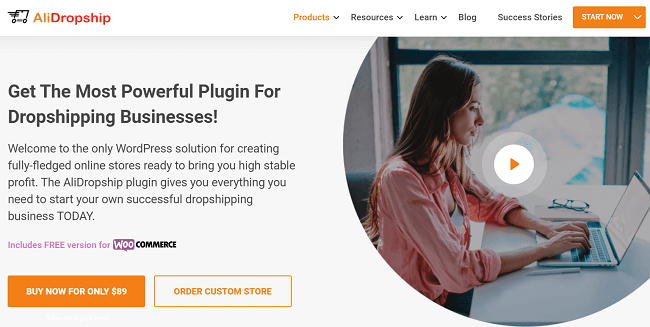
AliDropship offers three different dropshipping solutions:
- Custom Store (They’ll build a custom dropshipping store for you)
- Premium Store (They’ll build an exact replica of a top-performing store run by AliDropship for you, complete with a catalog of proven bestsellers)
- AliDropship Plugin (Install it to turn your existing ecommerce site into a dropshipping store)
Of these, most people opt for the plugin. Once you install it on your site, you can import products from AliExpress’s catalog of over 100m products to your store in one click.
Any product you import appears on your site instantly, complete with images, descriptions, and product variants. And the auto-updating feature means that if something changes on AliExpress, your product pages will refresh with the up-to-date data.
You can manage all your pricing, profit margins, sales, traffic stats, orders, etc. from one control panel. And as your customers place orders, AliDropship pushes the details through to the supplier and automates the whole fulfillment process.
Key features
- Free built-in themes
- Advanced automated pricing markup formula
- Auto updates
- Automated order fulfillment
- WooCommerce version
- One-click imports
- Control your own margins
Pros and cons
| Pros | Cons |
| Huge product catalog | Poor support |
| Automatic pricing feature | No monthly plan option |
| Easy imports |
Pricing
You can purchase the AliDropship plugin for WordPress & WooCommerce for a one-off fee of $89. Custom Stores start from $299 and Premium Stores start from $300.
#7 – Dropified
Dropified is another great dropshipping company worth checking out. They provide all the tools and services you need to run your dropshipping business, including some advanced automation features you won’t find elsewhere.
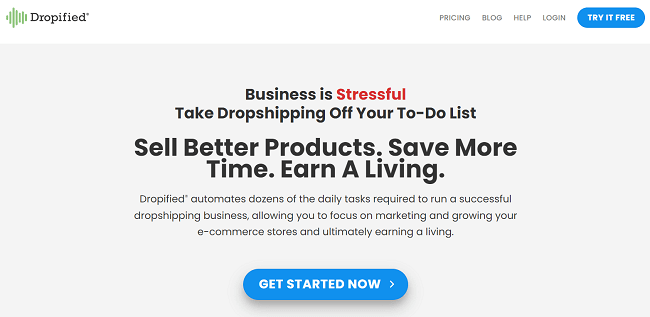
Dropified works a lot like the other platforms we’ve looked at so far. You connect it to your ecommerce platform (it integrates with Shopify, BigCommerce, WooCommerce, GrooveKart, and CommerceHQ), then use it to import products from dropshipping suppliers to your store.
Then, when a customer places an order, you order the product from your supplier at wholesale prices and they ship it for you.
Dropified lets you find and import products from Alibaba, Aliexpress, eBay, and 75+ other vendors. Then when you import them, you can edit images, descriptions, and headlines and remove backgrounds within the app.
And Dropified also does a lot of the heavy lifting for you with powerful automations. For example, you can automate pricing using rules based on margins, shipping costs, and more. And set up automations to notify you of any inventory or cost changes.
There are a few more advanced features Dropified comes with that other dropshipping websites lack, including advanced variant mapping, custom tracking URLs, custom supplier order notes, product bundling, offers and discounts, product review importing, and more. There’s also a Profit Dashboard that helps you keep track of how your business is performing.
In addition to selling through your ecommerce store, you can also use Dropified to list and sell dropshipping products through Facebook Marketplace.
Key features
- One-click imports
- AutoFulfill
- Bundle mapping
- Advanced image editor
- Automations
- Order notes
- Product bundles
- Profit tracking
- Insiders Report
- Facebook Marketplace lister
Pros and cons
| Pros | Cons |
| Advanced features | UI could be better |
| Supports multiple dropshipping vendors | |
| Integrates with several ecommerce platforms |
Pricing
Prices start at $47/month or $470/year. You can try it out free for 14 days.
#8 – DSers-AliExpress Dropshipping
DSers is a Shopify app that lets you find & import products to your Shopify store, and place hundreds of orders to AliExpress in seconds.
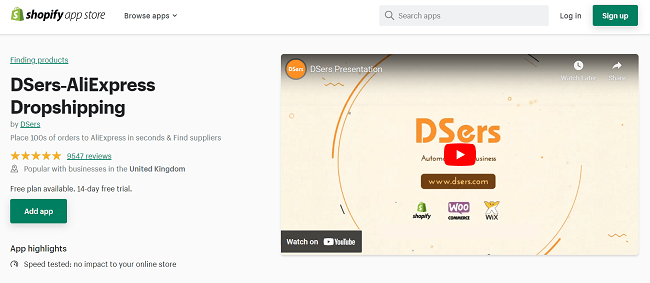
DSers works exclusively through AliExpress. It helps you to find suppliers on the AliExpress directory, add their products to your store, and edit product details. And it handles bulk order fulfillment for you so you can focus on running your store.
There’s no limit to the number of orders you can place and you’ll also get exclusive access to special suppliers.
Advanced features include supplier optimization (find cheaper suppliers that sell the same products), multi-store management, automatic shipping tracking and syncing, bundles and BOGO offer creation, automatic stock and price change notifications, reporting, and more.
All you have to do is register for a DSers account, link your store and AliExpress account, and you’re ready to get started.
Key features
- Import and edit products
- Supplier optimizer
- Product recommendations
- Pre-set shipping method
- Shopify integration
Pros and cons
| Pros | Cons |
| Easy to use | Vendors limited to AliExpress |
| Advanced features | Only integrates with Shopify |
| Nice UI |
Pricing
The Basic plan is free. Paid plans start from $19.90/month with yearly discounts available.
#9 – Importify
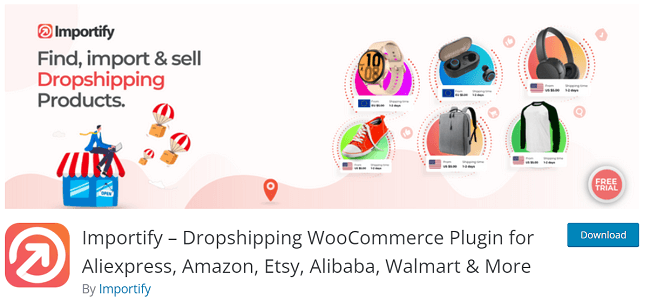
Last but not least, we have Importify—a dropshipping WordPress plugin designed for WooCommerce.
Importify helps dropshippers to automate their fulfillment processes and makes it easy to import products from wholesale suppliers directly to WooCommerce.
You can use Importify to find hot new dropshipping products from US and Chinese suppliers like AliExpress, Amazon, Banggood, Walmart, Shopee, and many more. Spy on other WooCommerce stores for inspiration or browse best-selling products in different categories to uncover new ideas.
The semi-automatic order fulfillment speeds up the process of placing orders with your supplier by automatically pre-populating the customer address on checkout pages on AliExpress, Amazon, and Dhgate.
Some advanced features we like include the ability to replace your supplier with a new one in one click, the override function, and the automatic price markup system.
Key features
- Thousands of products to choose from
- Semi-automatic order fulfillment
- Import and edit products
- Automated price markups
- Supplier replacement
- Override feature
Pros and cons
| Pros | Cons |
| Easy to use | Only works with WooCommerce |
| Lots of suppliers to choose from | |
| Good selection of products |
Pricing
Plans start at $14.95/month (discounts available for annual plans). You can try it out for free with no credit card required.
Best dropshipping websites FAQ
How can I start a dropshipping website?
There’s a lot that goes into launching an online dropshipping website. If you want your business to be a success, you’ll need to come up with a business plan and have a clear roadmap in place.
Below, we’ve created a quick 7-step guide to help you get started.
1. Come up with a product idea
The first step is figuring out what you want to sell. That means you’re going to want to brainstorm some ideas for products or categories of products, and then validate them to make sure they’re viable.
When you’re brainstorming, keep in mind that the goal is to choose products that fit three main criteria:
- They should be profitable (with high margins)
- There should be plenty of demand for them (and demand should be stable or trending upwards to ensure business longevity)
- They shouldn’t be too competitive (look for a gap in the market and find an underserved niche where there’s room for more sellers)
And of course, you should also try to choose dropshipping products that you’re passionate about or have a personal interest in. We’ll talk more about how to check if your product ideas fit the above criteria in the next step.
To come up with potential product ideas, you can try browsing best-sellers on ecommerce sites like Amazon or Wish. Or you can browse the Trending category on Spocket.
Another way to find hot products that are trending right now is by looking through product hashtags on social media, like #TikTokMadeMeBuyIt.
2. Validate your idea
Once you’ve got your list of product ideas, the next step is to validate them.
First, to determine whether or not a product idea will be sufficiently profitable, look at what kind of prices it currently sells for to the end consumer on competitor ecommerce stores or sites like Amazon. Then, look at some dropship supplier sites to find out how much you’ll have to pay for your products.
The difference between the price you pay and the price you sell for is your gross profit. You can use this to calculate profit margins.
A healthy profit margin is typically somewhere around 20%+, but the higher, the better. You’ll also have to factor in other costs and overheads and think about how many products you can realistically sell to determine what a ‘good’ profit margin looks like for your business.
Aside from profitability, you’ll also want to make sure there’s plenty of demand for the product. Some ways of testing whether or not the demand is there include:
- Look up the average monthly search volume of product searches for your products on Google
- Use Google Trends to see whether demand is going up or down over time
- See how many similar products are sold each month on ecommerce marketplaces like Amazon
You get the idea!
3. Carry out competitive research
Now you know what you want to sell, you can start putting together a business plan. At this stage, it’s worth carrying out some competitive research to learn more about your niche and explore your competitors’ business strategies.
You can use a competitor analysis tool to help with this—we’d recommend Semrush.
In your competitive analysis, try to find out who your main competitors are, their target markets, price points, traffic sources, etc.
Also, make a note of any strengths or weaknesses you identify, then use all that data to guide your own strategy. How can you do better than your competitors? What value can you add? And how can you position your brand to stand out from the crowd?
4. Find a supplier
The next step is to find a dropshipping supplier that carries the products you want to sell. There are plenty of wholesale suppliers out there that stock all kinds of products, but not all of them offer dropshipping fulfillment—so you might have to search around to find what you need.
There are plenty of suppliers that you can find through the dropshipping sites in this list, so that’s a great place to start. For example, you can find thousands of dropshipping suppliers around the world through Spocket.
There are also hundreds of dropshipping suppliers on AliExpress, mostly based in China. Other supplier directories where you might want to look include Wholesale Central and Worldwide Brands.
5. Create your online store
Now, you’re ready to create your online store. We’d recommend using Shopify to build your online storefront, and then connecting it to a dropshipping app like Spocket to import products from dropshipping suppliers.
Alternatively, you can use any of these awesome ecommerce platforms to build your site and integrate it with your preferred dropshipping plugin. If you’re focusing on selling print-on-demand products, you can use one of these print-on-demand sites instead.
We won’t go into the exact process of how to build your store here, but it’ll typically involve choosing a store theme, connecting your domain name, filling out your product catalog, creating landing pages, setting up pricing, connecting a payment processor, etc.
6. Set up your business and launch your store
Before you launch your store, make sure you’ve set up your business correctly and filled out all the relevant paperwork. We’re not lawyers so we can’t give specific advice here.
But for example, you might need to choose a business structure (Sole Proprietorship, LLC, etc.) and register for tax.
You should probably also think about things like liability and insurance, and make sure your ecommerce business is compliant with all relevant laws and regulations.
It may be worth speaking to a tax advisor, business advisor, and accountant at this stage to get everything ironed out.
Once everything’s ready, go ahead and launch your online store.
7. Come up with a marketing strategy
Finally, once your store’s live, you can start driving traffic and bringing in sales. And that will require you to come up with an effective marketing strategy.
There are plenty of marketing channels you might want to focus on. For example, you could use Google Ads, SEO, social media, or influencer marketing to send traffic to your dropshipping website and product pages.
And don’t forget about email marketing. It’s pretty much essential for every ecommerce business. You can use an email marketing tool to create your opt-in forms, build your list, set up automated campaigns that drive sales, send out abandoned cart reminder emails to boost conversions, etc.
Dropshipping vs print on demand
Print on demand and dropshipping businesses utilize a similar fulfillment model. In both cases, the supplier manufactures and ships the product directly to your customer on your behalf (so you don’t have to hold any stock).
The main difference between dropshipping and print on demand relates to the kind of products you sell.
Print on demand involves selling your own custom designs and artwork on custom branded products like t-shirts, mugs, tote bags, etc. When a customer places the order, the fulfillment company you partner with prints the product and ships it to them for you.
On the other hand, dropshipping usually involves selling unbranded products (that don’t feature your own custom designs), and you can sell pretty much any product you can think of – as long as you can find a dropshipping supplier.
Print-on-demand could be considered a sub-type of dropshipping as it utilizes the same fulfillment model but focuses on a specific category of products.
How much does it cost to start a dropshipping website?
It doesn’t cost much to start a dropshipping website. Compared to other types of ecommerce and retail businesses, there are very few startup costs—you don’t need to invest in building inventory upfront or managing storage. And you can build your online storefront with Shopify for as little as $29/month.
You might want to invest in some other tools to help you run your business (like an email marketing platform, competitive research tool, etc.) but all in all, it’s possible to start a dropshipping site for under a hundred bucks. Starting a business doesn’t get much cheaper than that!
Can you dropship on Amazon?
Yes, you can dropship on Amazon as long as you comply with the platform’s dropshipping policy. There are also dropshipping fees that vary by product type but are usually around 10-15%, which eats into your profit margins. That’s why we’d recommend selling through your own website instead using Shopify & Spocket.
Choosing the best dropshipping websites for your business
That concludes our guide on the best dropshipping companies for ecommerce stores in 2022!
We’ve covered a lot, so here’s a quick reminder of our top three recommendations:
- Spocket is our overall favorite dropshipping website. It has a huge range of products to choose from thousands of dropship suppliers and integrates easily with all the main ecommerce platforms.
- Printful is the best choice for print-on-demand dropshipping. It acts as a POD fulfillment service and lets you sell custom branded products through your own store, then prints and ships them to your customers for you.
- Shopify is the best ecommerce platform. You can use it to build your online storefront and then integrate it with a dropshipping platform like Spocket.
While you’re here, check out our roundup of ecommerce statistics to learn more about the state of the ecommerce industry this year.
Disclosure: This post contains affiliate links. This means we may make a small commission if you make a purchase.

